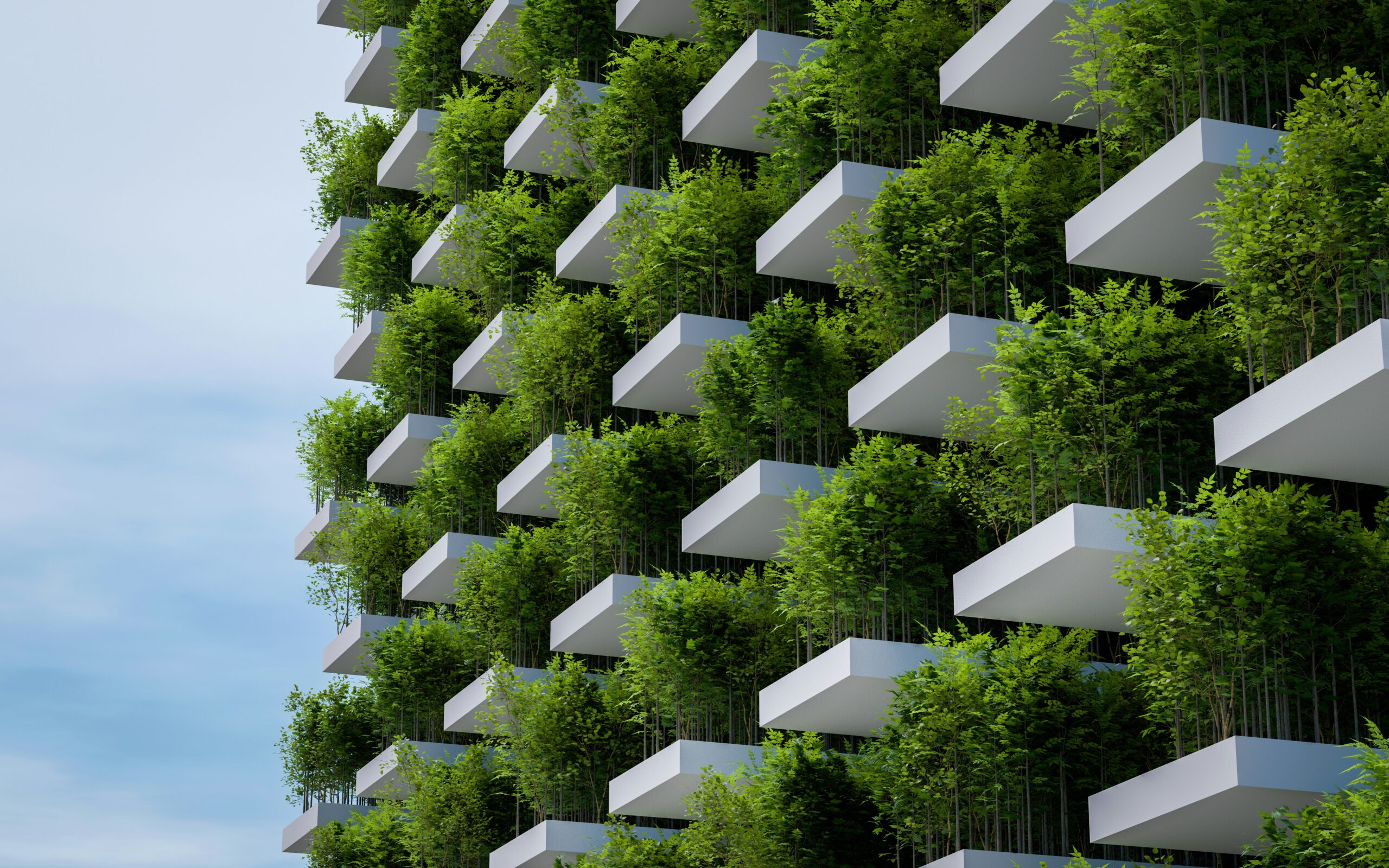Why Sustainable Architecture Matters
Buildings and construction account for 38% of total global CO2 emissions, according to the UN Environment Program. Sustainable architecture aims to reduce these emissions while creating functional, aesthetically pleasing, and eco-friendly spaces. Beyond reducing carbon footprints, sustainable design often decreases energy consumption, enhances occupant health, and encourages biodiversity.
By adopting the latest trends in sustainable architecture, professionals have the unique opportunity to lead environmental progress while reimagining how we live and work.
Key Trends Shaping the Future of Sustainable Architecture
1. Passive Design Strategies
Passive design focuses on working with natural climate conditions to reduce energy consumption. By understanding airflows, sunlight, and thermal properties, architects can design buildings that require minimal heating or cooling. For instance:
- Optimal Window Placement ensures ample daylighting while minimizing heat gain.
- Advanced Insulation keeps thermal energy from escaping.
Pro Tip: Use tools like SunCalc to determine sunlight angles for your site location.
2. Net-Zero Energy Buildings (NZEB)
Net-zero energy buildings are designed to produce as much energy as they consume. The integration of renewable energy sources such as solar panels, geothermal energy, and wind turbines is a hallmark of NZEBs. Companies like Tesla are making strides in developing solar roof tiles that blend seamlessly into designs while providing clean energy.
Case in Point: The Bullitt Center in Seattle is a leading example of an NZEB. It features energy-efficient systems, generates electricity via solar, and captures rainwater for reuse.
3. Smart Building Technology
IoT-enabled devices and smart systems are becoming central to sustainable architecture. From automated energy systems to advanced climate monitoring, these technologies allow buildings to respond in real-time to energy needs, reducing waste.
| Smart Tech Feature | Benefit |
|---|---|
| Automated Lighting | Reduced energy use |
| Smart Thermostats | Optimized HVAC energy consumption |
| Connected Sensors | Monitor structural integrity |
| Water Leak Detectors | Prevent water wastage |
| Air Quality Sensors | Ensure occupant health |
| Adaptive Shading Systems | Minimize overheating |
| Energy Use Analytics | Continuous performance monitoring |
| EV Charging Stations | Support sustainable mobility |
4. Use of Sustainable Materials
Materials make up a significant portion of a building’s environmental impact. Thankfully, progress in material science has created numerous sustainable options:
- Cross-Laminated Timber (CLT) as an alternative to concrete and steel.
- Recycled Concrete made from demolition waste.
- Mycelium Insulation, a natural and compostable thermal solution.
Did You Know? Mycelium, the root structure of mushrooms, is being explored as a robust building material thanks to its lightweight yet durable properties.
5. Green Roofs and Living Walls
Integrating nature into urban designs is gaining traction. Green roofs and living walls not only reduce heat islands in cities but also improve air quality and support biodiversity.
Example: Singapore’s Marina One combines lush terraces and vertical gardens, creating a “green core” in the heart of the city.
6. Circular Construction Principles
The move to a circular economy is transforming construction. Rather than disposing of materials after their lifecycle, circular construction focuses on reusing and recycling them. Modular designs allow sections of a building to be disassembled and repurposed rather than demolished.
Tip: Architects can explore building databases like Material Bank to source eco-friendly and reusable materials.
Common Barriers—and How Architects Can Overcome Them
Bringing sustainable projects to life isn’t without its challenges:
- High Initial Costs: Many clients worry about the upfront expense of sustainable materials and technologies. The solution? Share lifecycle cost analyses showcasing long-term savings.
- Limited Expertise: Architects can overcome this by enrolling in certification programs like LEED or WELL.
- Regulatory Constraints: Advocacy and collaboration with city planners can push for more sustainability-friendly policies.
Sustainable Architecture in Action
- The Edge (Amsterdam) – Known as the greenest office building in the world, it uses smart technology to track energy use and adjust building systems.
- Bosco Verticale (Milan) – These vertical forests clean urban air while providing energy efficiency.
- The Crystal (London) – A completely energy-efficient structure powered by solar energy and ground-source heat pumps.
FAQs About Sustainable Architecture
What is the most sustainable building material?
Cross-Laminated Timber (CLT) is considered an excellent eco-friendly option due to its low carbon footprint and renewability.
Are green roofs expensive to maintain?
While they involve initial costs, green roofs can lower HVAC expenses and last longer than traditional roofs, offering savings over time.
How much energy can Net-Zero Buildings save?
Net-zero buildings can slash energy costs by up to 40-50% depending on size, design, and energy generation methods.
Creating a Sustainable Future Through Design
Sustainable architecture offers an exciting opportunity to redefine how we think about the spaces we inhabit. From innovative material use to smart building technology, the trends explored above pave the way for a brighter, greener future. Architects, design enthusiasts, and homeowners alike can play a role in this movement.
If you’re looking to create a sustainable home or explore green architectural solutions, start today! Collaborate with forward-thinking architects or explore resources to transform your vision into reality.
